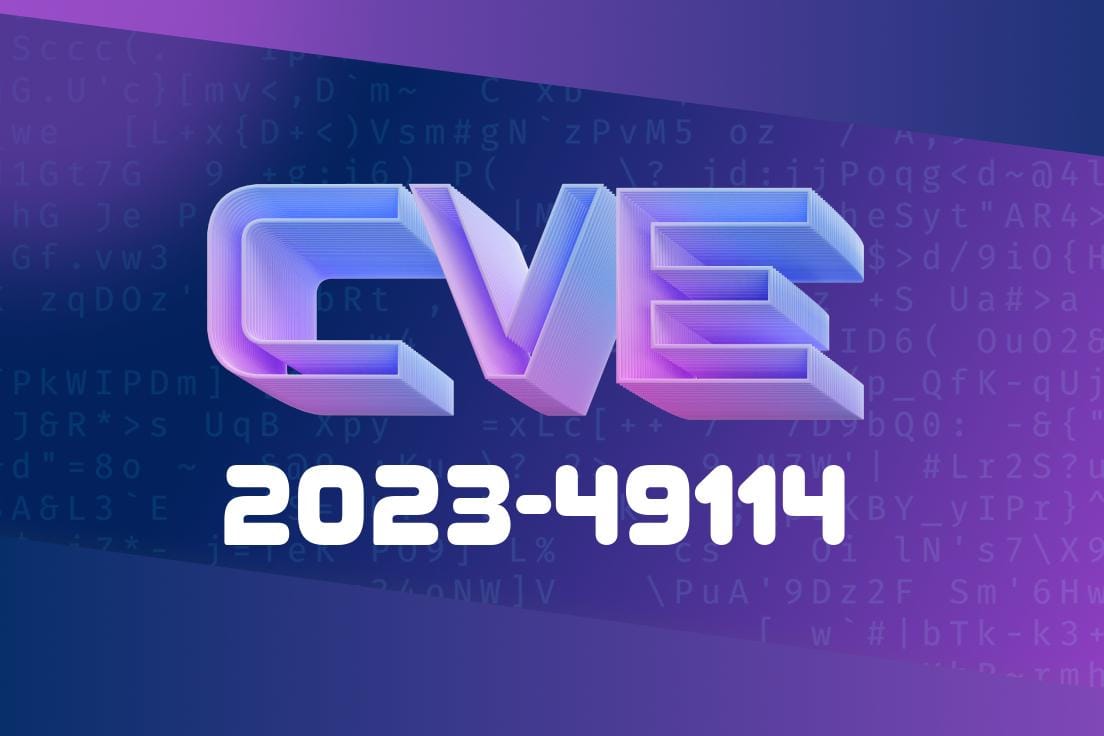CVE-2023-49114 is a newly identified security vulnerability discovered in the Qognify Video Management System (VMS) Client Viewer, specifically in versions 7.1 or higher. This vulnerability has been classified as a "DLL Hijacking" exploit, which potentially enables attackers with local system access to execute arbitrary code on the victim's system with higher privileges, thus allowing them to perform malicious activities. This post shall be detailing the nature of this vulnerability, its repercussions, and the potential mitigation strategies to keep your systems secure.
Vulnerability Insights
DLL Hijacking, also known as DLL Preloading or Binary Planting, is a security breach that takes advantages of the way applications load and execute Dynamic Link Libraries (DLLs). By placing a malicious DLL with the same name as a genuine DLL required by an application in a carefully chosen path, the attacker can cause the application to load the malicious DLL instead of the genuine one, potentially resulting in unauthorized code execution and security breaches.
Qognify VMS Client Viewer, a widely-used Video Management System software, has been found to be susceptible to this type of attack. The vulnerability is present in version 7.1 or higher, allowing a malicious user with local access to the target system to exploit the software and gain higher privileges.
Exploit Details
In the case of CVE-2023-49114, specific pre-conditions must be met for the vulnerability to be successfully exploited. Firstly, the malicious user must possess local access to the target system. They must also carefully place the malicious DLL in a specific location to ensure the application loads their malicious DLL instead of the legitimate one.
To demonstrate how the exploit takes place, consider the following code snippet
// Malicious DLL Code
#include <iostream>
#include <windows.h>
extern "C" __declspec(dllexport) BOOL APIENTRY DllMain(HINSTANCE hInstance, DWORD dwReason, LPVOID lpReserved)
{
if (dwReason == DLL_PROCESS_ATTACH)
{
MessageBoxA(, "DLL Hijacking successful!", "CVE-2023-49114", MB_OK | MB_ICONEXCLAMATION);
return true;
}
return false;
}
Assuming the attacker has created a malicious DLL file containing this code snippet, they must then ensure that the Qognify VMS Client Viewer loads this DLL instead of the genuine file. To do this, the attacker can place their crafted DLL (with the same name as a required DLL) in the appropriate directory where the vulnerable application is expected to search for and load from.
Original References
To stay abreast of the latest developments related to CVE-2023-49114, please refer to the official sources for more information:
1. CVE Details Page
2. Qognify Official Advisory
Mitigation Strategies
To protect your systems against CVE-2023-49114 and similar DLL Hijacking exploits, consider the following precautionary measures:
Keep your software up-to-date and install patches released by vendors whenever necessary.
2. Implement security policies and best practices to restrict third-party applications from loading unknown or unnecessary DLLs.
3. Restrict write access or file modifications in directories commonly accessed by sensitive applications.
4. Use security solutions such as antivirus software, firewalls, and intrusion detection systems to monitor your system for potential threats.
Conclusion
CVE-2023-49114 exposes a DLL hijacking vulnerability in Qognify VMS Client Viewer versions 7.1 and higher, opening the door to potential code execution and higher privilege escalation for local users if certain pre-conditions are met. Staying informed and taking precautionary measures are essential to safeguarding your systems against this and similar exploits.
Timeline
Published on: 02/26/2024 16:27:47 UTC
Last modified on: 03/03/2024 03:15:07 UTC
